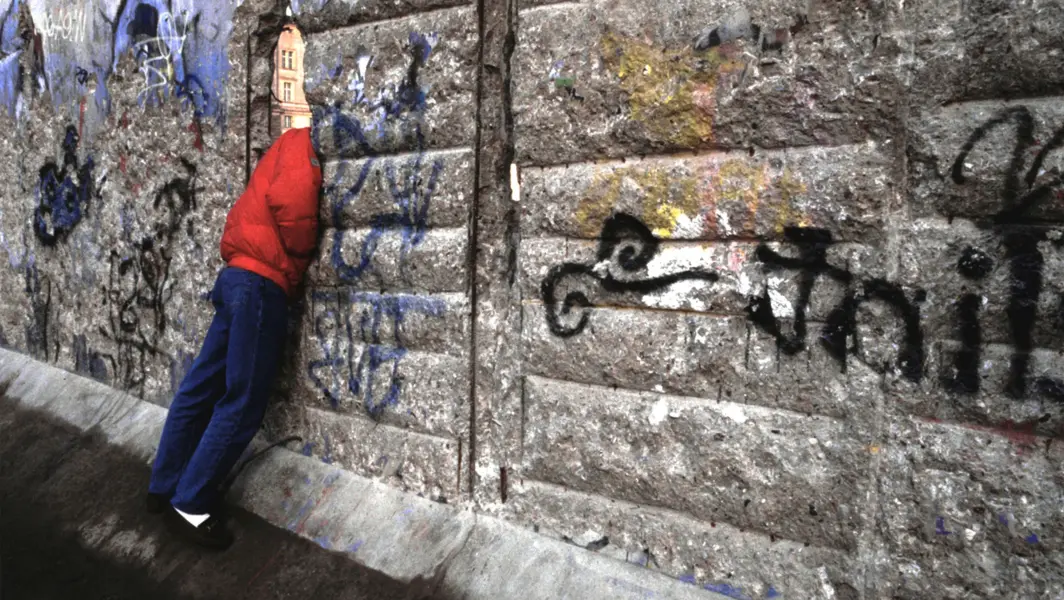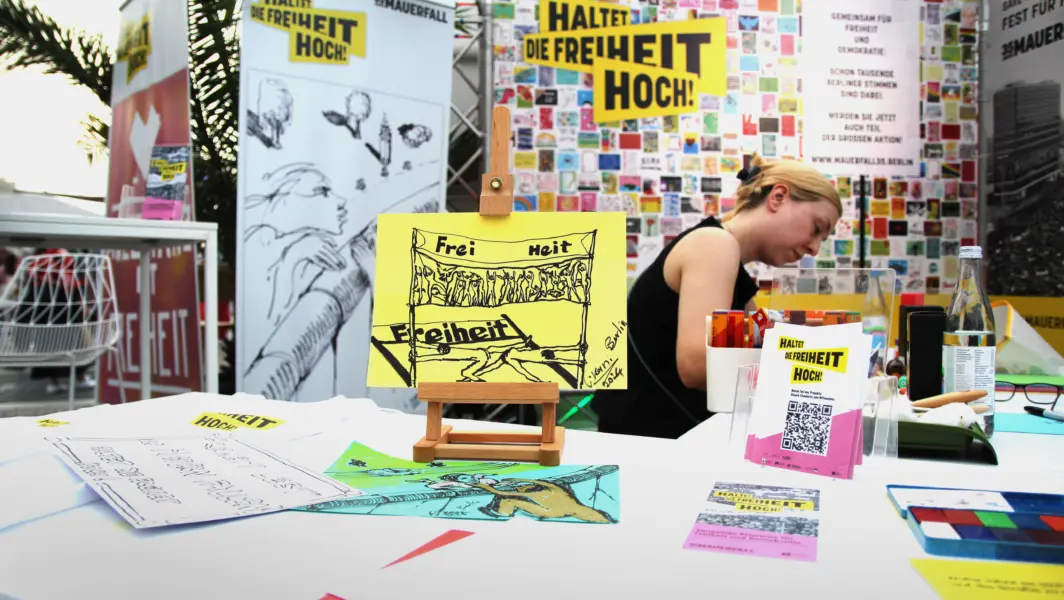The rule of the Socialist Unity Party of Germany (SED) was anchored in the constitution of the GDR. In 1989, the protests against this dictatorship were growing louder and louder. Discontent increased even further after the GDR held local elections in May of that year. For the very first time, civil rights activists were able to prove electoral fraud in the clearly non-free elections that had been intended to legitimise the power of the SED.

© ullstein bild – Röhrbein
In the summer and autumn of 1989, more and more GDR citizens were demanding democratic reforms and basic human rights, such as the freedom to travel, freedom of expression, freedom of the press and freedom of assembly. Starting with the Monday Demonstrations in Leipzig, hundreds of thousands of people were soon taking to the streets across the country. At the same time, the number of people fleeing or emigrating to the West was rising sharply. The SED regime was undoubtedly under increasing pressure. Neither violent
repression by the GDR’s state security service (Stasi) nor the replacement of long-time party leader Erich Honecker was able to stop the collapse of power.
When the Berlin Wall came down on 9 November 1989, the SED regime lost its last pillar of support. The GDR leadership was forced to agree to democratic reforms and the dissolution of the Stasi. When this didn’t proceed as quickly as promised, citizens stormed Stasi oces throughout the country.
Fall of the Berlin Wall
The Berlin Wall was built in 1961 to prevent people from leaving the GDR. For 28 years, the border fortifications were continually extended and expanded. The Wall was the most prominent symbol of the
division of Berlin, Germany and Europe, and also one of the most important ways in which the GDR’s dictatorial government was able to maintain power. In autumn 1989, in response to pressure from the masses of demonstrators and increasing numbers of people fleeing to the West, the SED announced an apparent concession: as part of a new travel regulation designed to “win back” the masses, the regime had decided to grant the freedom to travel called for by the demonstrators.
However, at the press conference hastily organised on 9 November to announce the forthcoming travel concession, things took an unexpected turn. When asked exactly when the new freedom to travel would go into eect, SED spokesperson Günter Schabowski ad-libbed the words for which he is now famous: “Immediately, without delay”. This improvised statement made history that very evening when a West German TV broadcaster reported: “GDR opens border”. Immediately thereafter, tens of thousands of people
spontaneously gathered at various border crossings in Berlin. The guards working there called their superiors but received no specific orders from the SED leadership. When the guards no longer knew how to deal with the crowds, they lifted the gates and let the people through. The Berlin Wall had “fallen”.
Further information
For further information about the historic context of the Peaceful Revolution and the Fall of the Berlin Wall in English, we recommend these websites:






